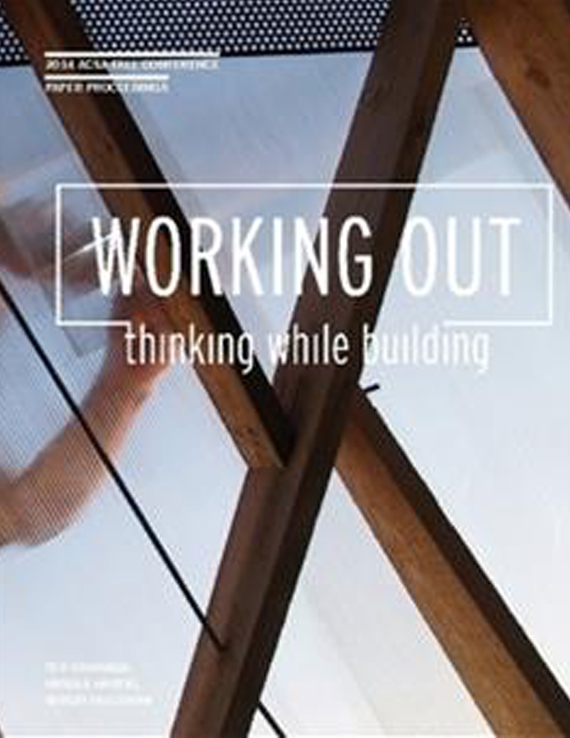Author(s): Emily McGlohn, Hans C. Hermann & Tom Leathem
Successful collaborations are increasingly important as architectural projects grow in complexity and project delivery methods like Integrated Project Delivery and Design Build become more common.[1] Given this fact and the rise of collaborative design thinking in architectural education, this paper will explore one institution’s attempt to design a clear means of cross-disciplinary collaborative learning using design/build as the vehicle. Two bus shelters are the recent result of a design/build studio shared by architecture and building construction science (BCS) students and faculty. Unique in nature, this studio was made possible by a radical new approach to the traditional BCS curriculum, which moves away from the typical three-hour lecture to a six credit hour studio-based format scheduled to align with their architecture counterparts. Participating in design activities, and the preparation of schedules and estimates with equal interest, both student groups were asked to broaden their concept of project delivery. Complete in one semester, on time, and on budget, the bus shelters are a success by typical design/build standards, but they are not the subjects of this paper. It is the collaboration between disciplines and faculty that posed the greatest challenge, yet advanced the college’s effort of a cross-disciplinary collaborative learning pedagogy.The pedagogical preparations by faculty members to execute the planning of this studio presented new challenges for several reasons: The learning outcomes for the studio required by the National Architectural Accrediting Board (NAAB) and the American Council for Construction Education (ACCE) were different for each discipline. The large number of students (35 architecture students and 14 BCS students) required careful consideration of team creation, work sharing, and jobsite logistics. The studio was non-voluntary; not every student was fully invested in the work. Cultural differences between students in each discipline created a divide over working habits; architecture students were more likely to work at all hours of the night. Overcoming these challenges – some expected, some not – offer new insight into cross-disciplinary collaborative learning in architectural education. This paper discusses preparations for the course, a critique of the process, and lessons learned as a means of refining the curriculum and advancing the pedagogy. A replicable cross-discipline pedagogy for teaching appreciation of expertise and effective communication between architects and constructors is one goal of this research. The shared experience of design/build is the vehicle for these lessons. Cross-disciplinary collaborative learning can create stronger professional relationships that will ultimately produce better and more efficient methods of design and construction. [1] Andrew Pressman, Designing Relationships: The Art of Collaboration in Architecture. New York: Routledge, 2014.
Volume Editors
Sergio Palleroni, Ted Cavanagh & Ursula Hartig
ISBN
978-0-935502-94-7

 Study Architecture
Study Architecture  ProPEL
ProPEL 
